Four major ethnic groups in ancient Mexico used hieroglyphic writing —-the Zapotec, the Maya, the Mixtec, and the Aztec. The Zapotec system is both the oldest and the least widely studied.
Our oldest carved stone with Zapotec glyphs is Monument 3 of San José Mogote, which dates to the Late Rosario phase (see the section on The Origins of Social Inequality). It was discovered in situ in 1975 by Joyce Marcus while digging near San José Mogote’s main temple. This stone was laid horizontally in a corridor, where it could be trod upon. The image one steps on is that of an enemy captive whose heart had been removed. Two streams of blood from his chest end in a “drop of blood” motif that had been used since the earlier Guadalupe phase. Between the captive’s feet is his hieroglyphic name, “1 Motion.” This stone was likely carved less than a century before the leaders of San José Mogote moved their followers to the summit of Monte Albán. There they carved hundreds of similar depictions of slain captives, a form of political propaganda aimed at intimidating their enemies.

Figure 15. This carved stone at San José Mogote (Monument 3) shows a sacrificial victim whose carved body could be stepped on by anyone entering the corridor between two temple platforms. The victim has had his heart removed; blood flows from his chest to the edge of the stone, ending in two examples of the “blood drop” motif (a circle + triangle). (Marcus 2020)
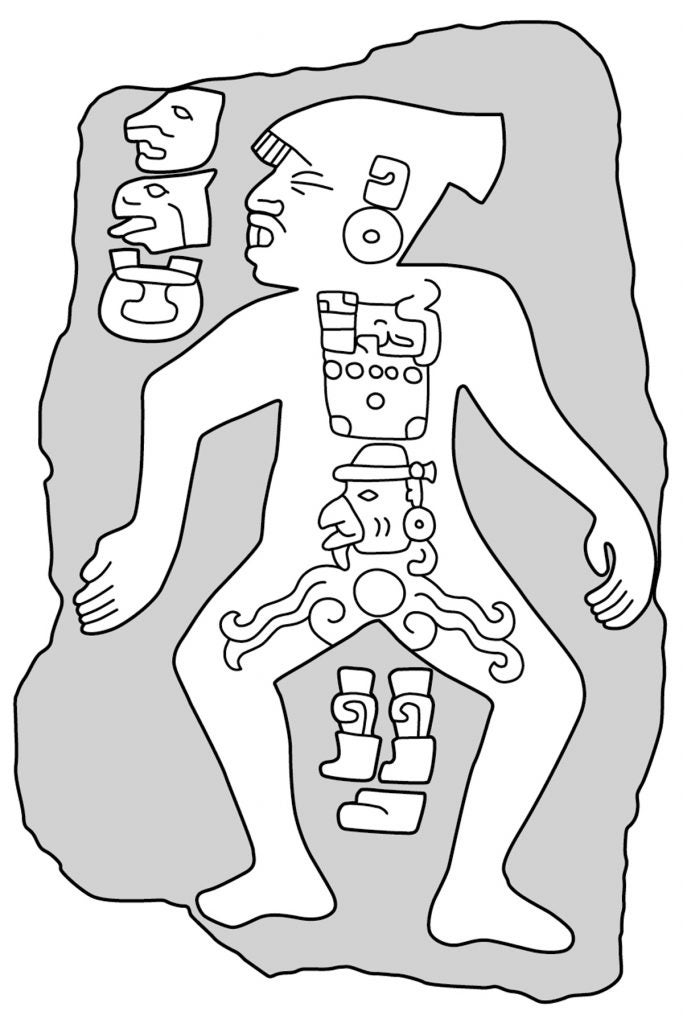
Figure 16. This Monte Albán I monument, one of more than 300 that depict sacrificed enemies, has one column of hieroglyphs extending from his neck to his knees and three more hieroglyphs in front of his face. He has suffered genital mutilation. (Marcus 2020)
Joyce Marcus of UMMAA began studying Zapotec writing in 1972 after previously working on Maya hieroglyphs. She found that during Period I of Monte Albán (500 BC-AD 1 in conventional radiocarbon years) that capital city had a monopoly on hieroglyphic inscriptions, most of which dealt with themes of sacrificing rivals. Two stelae at Monte Albán (nos. 12 and 13) refer to an early ruler and identify the writing system as Zapotec by the use of numbers after day names (which only occurs in Zapotec) and a pun that makes sense only if the language was Zapotec (“first born son” and “human thumb” were homonyms or sound-alike words).
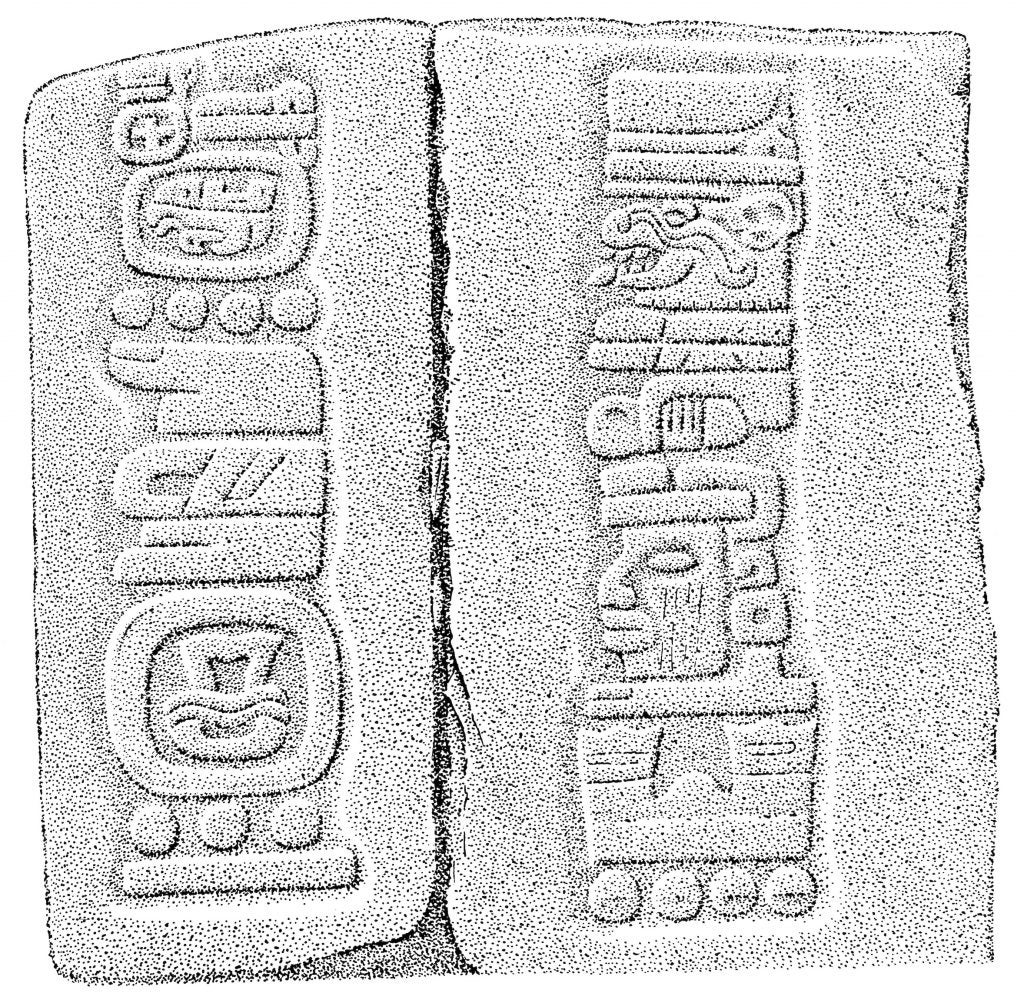
Figure 17. These two Monte Albán I stelae were found associated with multiple carvings of sacrificial victims. The text starts with the Zapotec year sign and may be read “In the year 4 Lightning a man named 8 Water, a first-born son, was seated in office.” (Marcus 2020)
During Monte Albán’s Period II (AD 1-250 in conventional radiocarbon years), one important theme for hieroglyphic writing was defining the territory claimed by Monte Albán. Subject localities were given by carving a “hill” or “place” glyph, accompanied by other glyphs specifying the place. So far only about a dozen of these places can be linked to known localities—for example, Cuicatlán (“The Place of Song”), Sosola (“The Place of the Pierced Face”), and Tututepec (“Hill of the Bird”). Such places are 75-150 km from Monte Albán, indicating the extent of Monte Albán’s influence at its peak.
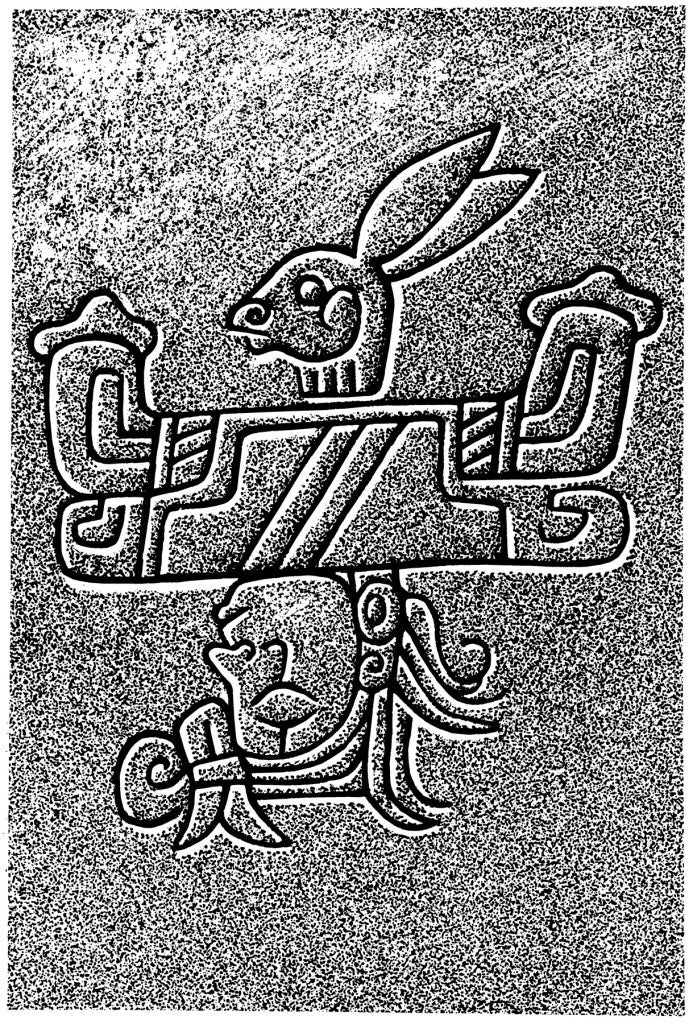
Figure 18. This Monte Albán II carved stone shows a hieroglyph that has three components: a hill sign, the head of a jackrabbit, and an inverted head with its hair tied in a knot. The inverted head suggests that Monte Albán claimed to have conquered a place called “Hill of the Jackrabbit.” (Marcus 2020)
During Period IIIa of Monte Albán (which climaxed around AD 300 or 400), the theme of some of its monuments was its relationship with Teotihuacan, a rival expansionist state whose capital lay near present-day Mexico City. Some carved stones show named visitors—in ambassadorial garb—leaving Teotihuacan, traveling to Oaxaca to attend the dedication of the South Platform where a new Zapotec ruler was inaugurated.

Figure 19. These four Monte Albán IIIa carvings were placed at the corners of Monte Albán’s South Platform to commemorate a visit from Teotihuacan ambassadors. (Marcus 2020)
During the period known as Monte Albán IIIb-IV (perhaps AD 600-900 in conventional radiocarbon years), Monte Albán gradually began to lose its power and influence. As the old Zapotec capital declined, its former tribute territory broke up into a series of competing petty states, no one of which was powerful enough to reunify the valley.
According to Marcus’ research, a major concern of the ruling families at these petty states was to legitimize their right to rule. Often this was done using a new type of carved monument, called a “genealogical register.” Such a register might depict two or three generations of marital pairs, or list successive marital pairs representing up to a dozen generations.
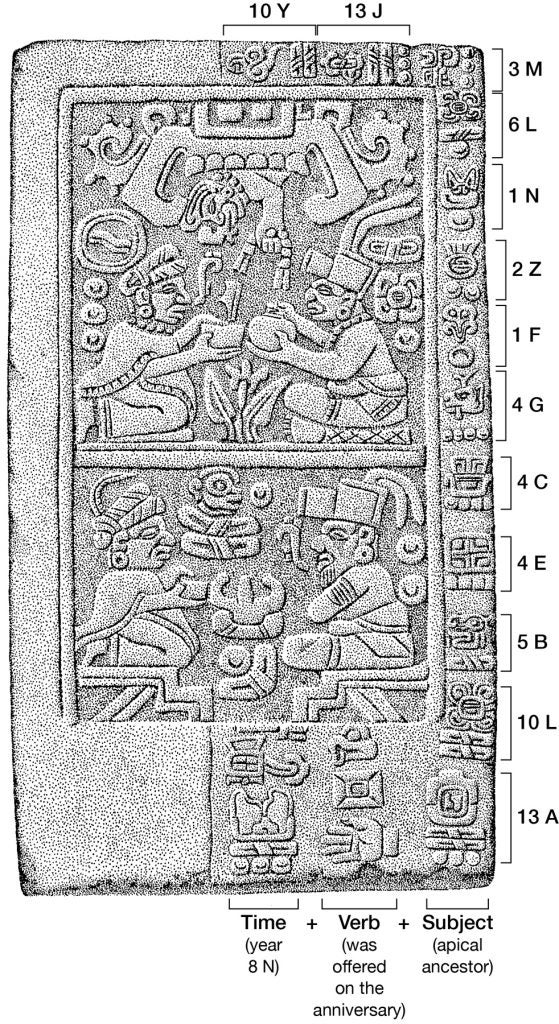
Figure 20. A genealogical register from Monte Albán IIIb-IV. The hieroglyphs begin at the bottom of the stone, ascend the right edge, and end at the top. Included are the names of six noble couples, including those pictured (Marcus 2020)
In contrast to earlier Zapotec monuments, which were set in public view, these registers establishing genealogical credentials were usually associated with royal tombs, which had restricted access. This represented a shift from “vertical propaganda” (messages from the elite to commoners) to “horizontal propaganda” (messages from the elite to other elites).
One genealogical register from a royal tomb at a site called “Cerro de la Campana,” near Suchilquitongo, contains a hieroglyphic phrase that confirms the word order typical of the Zapotec language. This order is date + verb + subject, which matches the word order of Zapotec sixteenth-century texts and today’s spoken Zapotec.
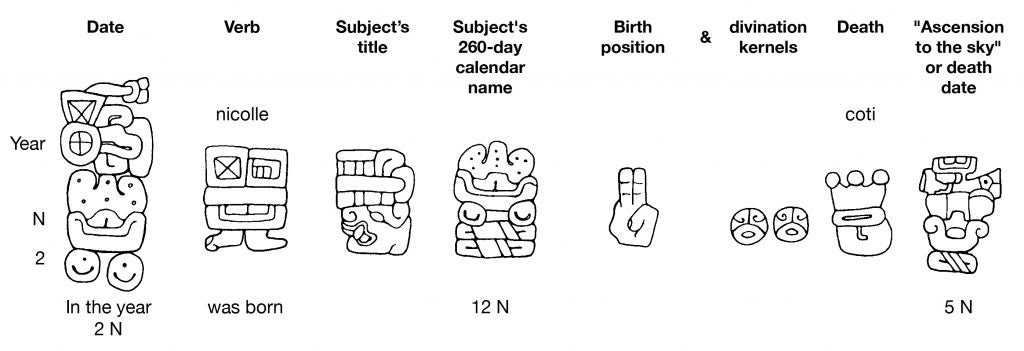
Figure 21. The word order of the hieroglyphs in this Monte Albán IIIb-IV text, recorded by Arthur Miller at Cerro de la Campana, confirms that the language being used is Zapotec. (Marcus 2020)
During the final centuries leading up to the Spanish Conquest, Zapotec stone monuments virtually ceased to exist. Writing itself did not disappear, but is known only from a score of carved bones, the main chamber of a tomb at Zaachila, and a few painted cloths. We know much more about the Mixtec and Aztec writing of this late period, known as Monte Albán Period V.

Figure 22. One portion of a carved bone from Tomb 7 of Monte Albán. To highlight the white images, the bone carver often used pieces of blue turquoise as the background. This Monte Albán V bone records the names of conquered places. (Marcus 2020)
Images on this page are from Zapotec Monuments and Political History (Marcus 2020).
Copyright © 2021 University of Michigan Museum of Anthropological Archaeology (UMMAA)

